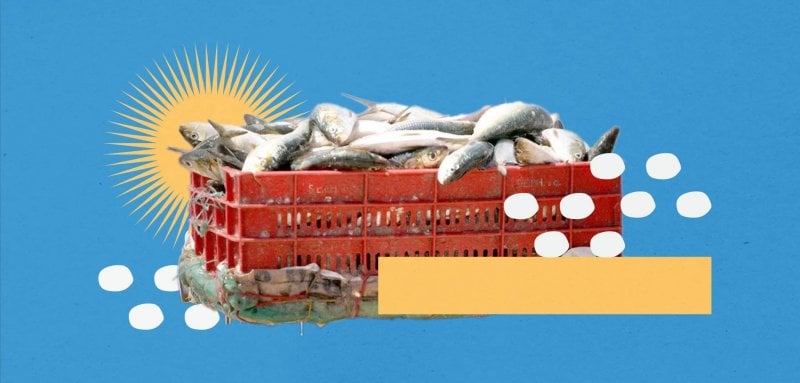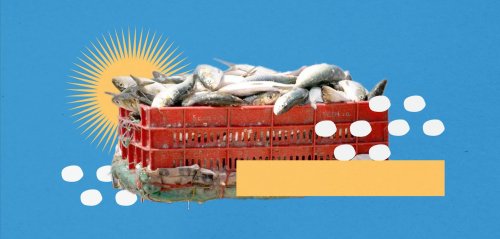For the past ten years, fisherman Saeed Awad, 50, has been observing changes in the types of fish he used to catch. The man, who is a resident of the coastal city of Latakia in Syria, can easily notice new species that fishermen are not accustomed to seeing and is sometimes troubled by changes in the appearance times of other species. He wonders about the reasons behind these changes and, along with his fellow fishermen and relevant authorities, seeks to understand them and explore the secrets behind them.
He says, "I've known this sea since I was a child, and I remember all the fish in it and the fishing seasons to catch them. Over more than ten years, we have noticed more and more new fish species visiting our waters. Some are beneficial and can be utilized as an additional source of livelihood for us, while others require caution, as we need to discover the extent to which they can be traded among people as a food source." Among these fish, Awad mentions locally known names such as the Sultani, Gulf, Samnis, and al-Ghazal fish, among others.
The fisherman also notices changes in the dates of the appearance of some fish that used to come to Mediterranean waters for seasonal migration before or after they reproduce, coming south from the Nile and the Red Sea. Additionally, he has noticed variations in some sea characteristics that he has memorized by heart, such as turbidity or purity of the water, as well as wind times and directions.
The rise in temperatures of the Mediterranean waters resulting from climate change contributes to increased fish migration from the south to the north.
The fisherman attributes these observations, supported by several scientific reports and the opinions of experts in the region, to the gradual movement of fish species from the Red Sea and the Indian Ocean southwards to the various shores of the Mediterranean Sea northwards. Temperature fluctuations and weather conditions associated with climate change have been linked to these observations. Awad does not overlook human factors, including pollution, illegal fishing, and overfishing, which have contributed to the scarcity of some local fish species that have always lived in the Mediterranean waters, considered among the most polluted in the world.
In recent years, several news reports in Syria and Mediterranean countries have talked about the frequent detection of new "invasive" fish species, some of which have significant nutritional and economic value. In contrast, others may be toxic, causing deaths or serious illnesses. Some also pose a threat to biodiversity, altering the marine ecosystem. They threaten local fish species by displacing them, settling in their place, and competing for resources.
The Food and Agriculture Organization (FAO) of the United Nations, in a report published in 2022, pointed out that "the Mediterranean Sea is being invaded by hundreds of fish, jellyfish, prawns, and other marine species from outside the region… The Mediterranean Sea is undergoing a 'tropicalization' process as water temperatures rise, largely due to climate change. Many species have also migrated via well-traveled shipping routes, while other species have been intentionally introduced for aquaculture purposes. In the coming years, the number of non-native species is expected to continue to increase. Once established, non-indigenous species can outcompete native ones and alter their surrounding ecosystems, with potential economic implications for fisheries, tourism, or even human health."
What are these fish? What is the reason for their appearance?
From his workplace in the Syrian coastal city of Tartus, which is one of the main fishing areas in Syria alongside Latakia, Baniyas, and Jableh, Dr. Alaa al-Sheikh Ahmad, the director of the coastal area branch at the Public Authority for Fisheries and Aquatic Resources, talks to Raseef22 about migratory fish from the Red Sea southward to the Mediterranean northward, especially along the eastern coast of Palestine, Lebanon, Syria, and even to Turkey and Greece. This phenomenon is scientifically referred to as "Lessepsian migration."
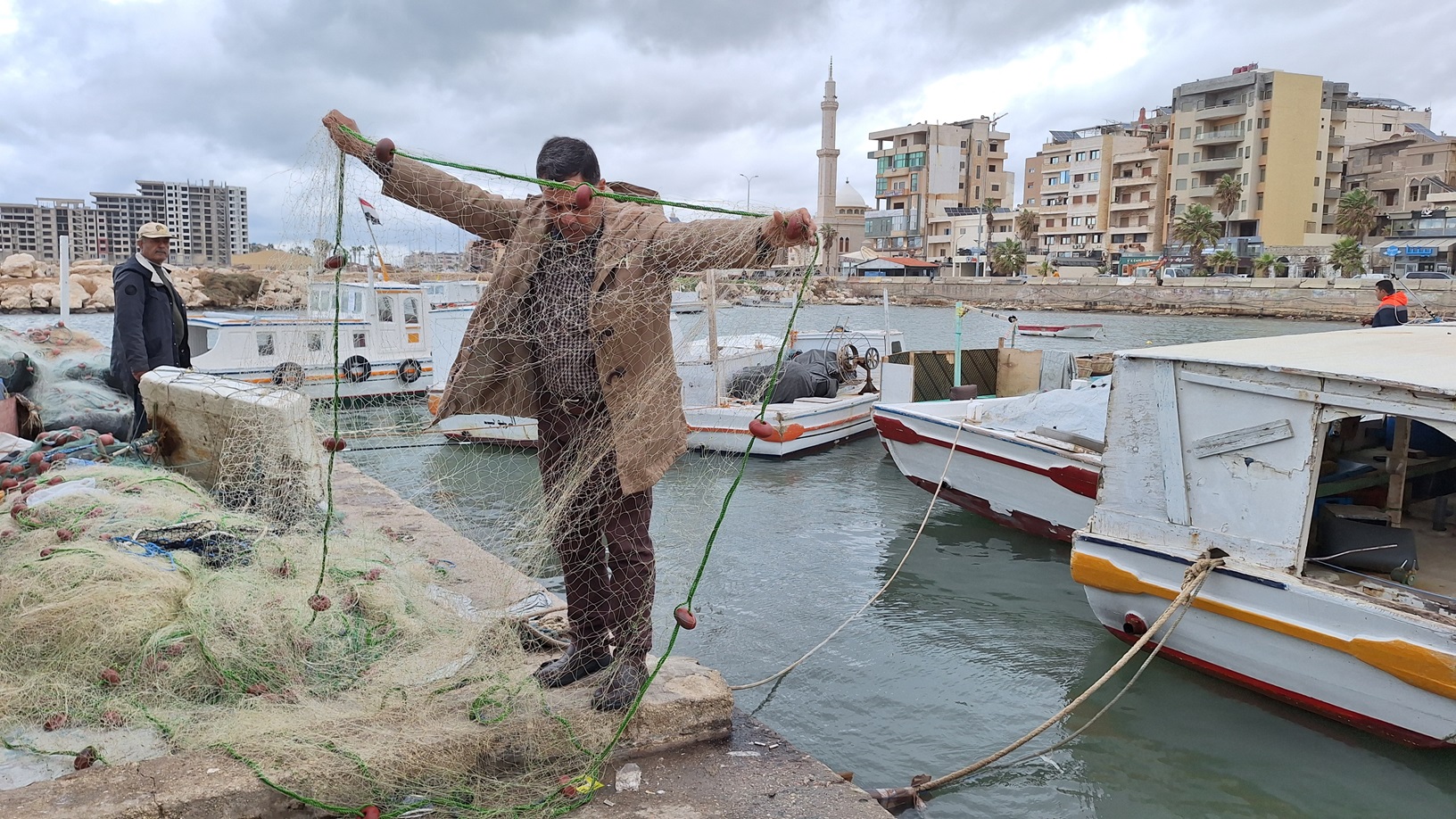 Adel Tanbouk, head of the Fishermen's Association in the Syrian coastal city of Tartus | Photo by Zeina Shahla
Adel Tanbouk, head of the Fishermen's Association in the Syrian coastal city of Tartus | Photo by Zeina Shahla
Adel Tanbouk, head of the Fishermen's Association in the Syrian coastal city of Tartus | Photo by Zeina Shahla
Dr. Ahmad, a specialist in marine biology and fisheries, points out that this term was first used by a researcher named Por in 1964 to describe the then-new biological phenomenon of one-way transfer from the Red Sea to the Mediterranean. In 1969, the same researcher coined the term "Lessepsian migrant" for any species from the Red Sea that managed to cross the Suez Canal and remain in the eastern basin of the Mediterranean.
Citing scientists who studied the phenomenon, he explains that it began with the migration of some benthic animals and types of plankton, both plant and animal. The first Lessepsian migrant species, a type of pearl oyster (Pinctada radiata), was recorded 26 years after the construction of the Suez Canal in 1895. In 1902, the arrival of the first Lessepsian migrant fish species, Atherinomorus lacunosus, was observed in the Mediterranean, along with another species of pearl oyster, Chama broderipii.
This migration did not initially occur through the Suez Canal due to two natural barriers standing in the way. First, the high salinity of the lakes in the canal presented a barrier. Additionally, the waters of the Nile used to veer to the right upon reaching the Mediterranean due to the Coriolis force, creating a barrier. Therefore, migration began through the ballast waters that ocean-crossing ships pump into the sea for stability. Gradually, the salinity of the lakes decreased, aligning with the Red and Mediterranean Sea waters. This increased the pace of fish migration, primarily towards the eastern coasts of the Mediterranean, from its southern to northern regions.
In addition to the expansion of the Suez Canal in 2015, Dr. Ahmad indicates that the rise in Mediterranean water temperatures due to global climate change contributes to the increase in fish migration from the south to the north. Reports suggest that the temperature has increased between 0.6 and one degree Celsius over the last three decades, with expectations of reaching up to 3.5 degrees by the year 2100. The sea's salinity has also risen from 37 to 39.5 parts per thousand, facilitating the movement of tropical and subtropical fish.
"Thus, we have been witnessing and reading about reports and studies on the registration of new fish species on various Mediterranean shores in recent decades," adds the expert. He emphasizes that registration is linked to technical and technological capabilities, such as boats equipped with the required scientific equipment, increased interest from researchers, observations from fishermen, and their collaboration with relevant authorities to monitor and study species for scientific classification, among other factors.
"Over more than ten years, we have been noticing more and more new fish species visiting our waters. Some are beneficial and can be utilized as an additional source of livelihood for us, while others require caution, as we need to discover the extent to which they can be traded among people as a source of food."
As for the monitoring process, he explains in detail, "It starts with personal observations during the repeated tours conducted by the authority's technicians or through fishermen who come across fish they haven't seen before. They contact us, and we—through experience or referring to global fish atlases available to us—classify and verify the fish's name, type, and source. We check whether it has been previously recorded in any Mediterranean country. Then, we work on documenting its first appearance on the Syrian coast through articles in specialized scientific journals, either internationally or domestically. It is essential to distinguish between migratory species that have settled in our waters and those that come to our shores seasonally or periodically, moving with currents and temperature changes, such as tuna species that come to Syrian waters between June and October every year."
What actually happened in the Mediterranean Sea?
Currently, the Mediterranean Sea, which is a hotspot for biodiversity hosting 4 percent to 18 percent of all known marine species, is facing complex challenges, according to Dr. Izdihar Ali Ammar, professor and researcher at the Higher Institute of Marine Research at Tishreen University in the coastal city of Latakia. In addition to millions of residents and tourists visiting annually and with the Mediterranean being one of the world's busiest maritime routes, climate change, pollution, and overfishing exert significant pressures on its environment. Dr. Ammar states, "Climate change in this sea has been observed to exceed the global average, even though greenhouse gas emissions in its countries are at relatively low levels.”
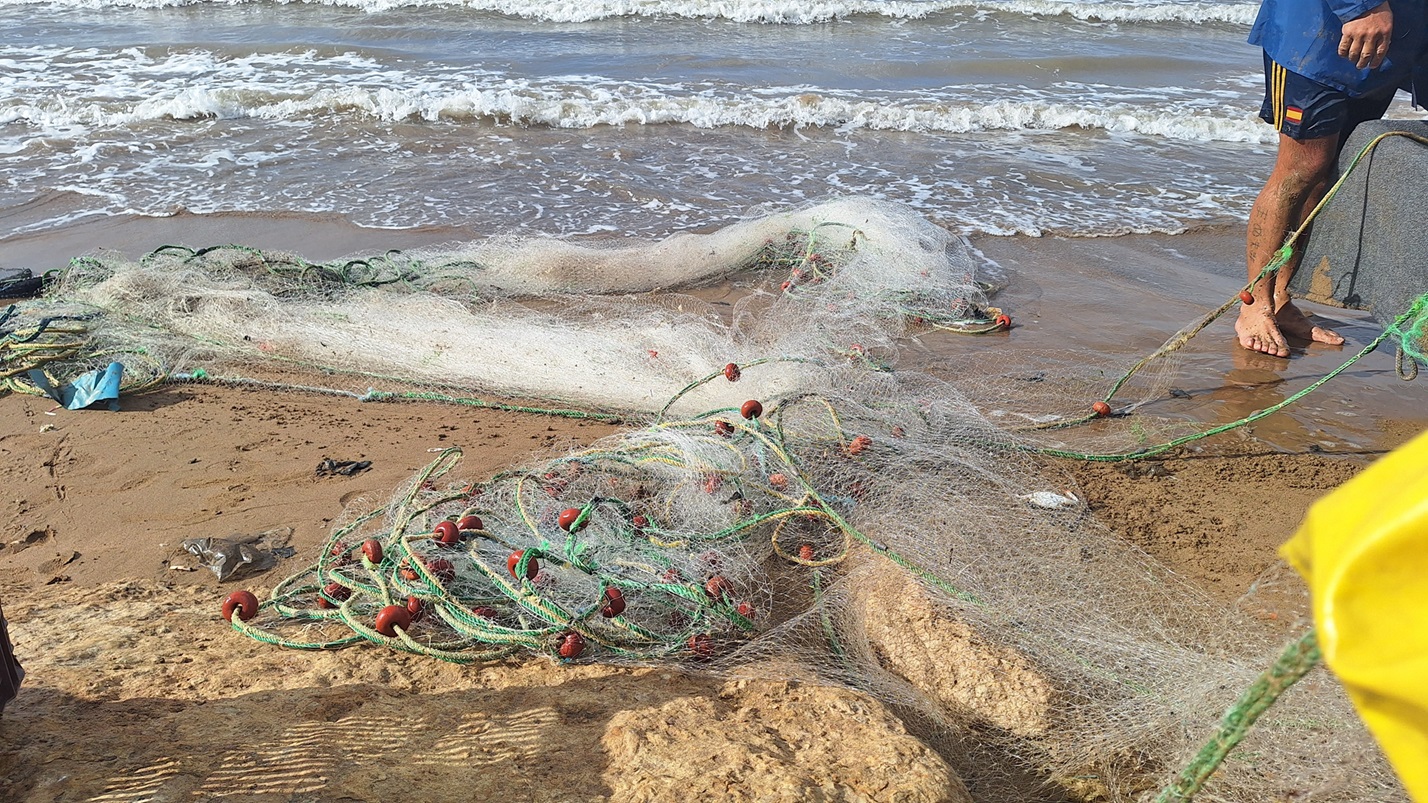 Fishermen on the beaches of the Syrian coastal city of Tartus | Photo by Zeina Shahla
Fishermen on the beaches of the Syrian coastal city of Tartus | Photo by Zeina Shahla
Fishermen on the beaches of the Syrian coastal city of Tartus | Photo by Zeina Shahla
According to the expert, the United Nations Environment Programme reports indicate that climatic conditions have been leaning toward warmer and drier conditions in this region in recent decades. The average annual temperatures for air and sea have risen by approximately 1.4 degrees Celsius compared to the period 1880-1899. Moreover, sea levels have increased by about three centimeters per decade over the last two decades.
Ammar adds, "The Mediterranean Sea is currently one of the regions most responsive to climate change. Biodiversity is expected to be the most affected over the next ten years, followed by habitat deterioration and possibly habitat loss. Anticipated changes pose numerous risks to marine ecosystems and human well-being. Marine organisms are impacted by any disruption in feeding, growth, and reproduction processes primarily associated with temperature variations. Any alterations in their natural habitats and available food supplies, especially plankton, are expected to lead to a gradual decline in their quantities in warmer waters, which will practically reduce nutrient availability for animals along the food chain."
Regarding changes in fish species within the Mediterranean, the expert explains that, in response to rising water temperatures, fish species in warm waters move towards polar regions, causing a decline in the stocks of those species inhabiting colder areas. Studies have shown a negative correlation between temperature and fish catches in the Mediterranean for about 70 percent of the species. The quantities of key fish species in the Mediterranean, particularly Syria, have decreased since the early 21st century. Meanwhile, the percentage of Lessepsian species in fish catches has increased compared to local fish. Ammar states, "Our latest research indicates that Lessepsian species may dominate up to 80 percent in some habitats."
The registration of new fish species is associated with factors such as technical and technological capabilities, including boats equipped with necessary scientific equipment, increased interest from researchers, and observations from fishermen collaborating with relevant authorities to monitor and study species for scientific classification.
Ammar expresses concerns that diverse exotic species, whether animals or plants, may have serious adverse effects on biodiversity, ecosystems, fisheries, human health, tourism, and coastal development. Controlling them could be extremely difficult and costly. There are also fears of impacts on food security, as aquatic foods contribute to about one-fifth of human-animal protein. Moreover, millions of people, mostly in developing countries, work in the fishing and aquaculture sectors, and fish represent a significant resource in the balance of exports for many countries.
She also highlights there are several edible fish, crustaceans, and shellfish with high economic and commercial value in their native regions. Examples include grouper, sultan fish, parrotfish, shrimp, blue crab, pearl oyster, long-spined black sea urchin, and others. These species can be promoted and sold in fish markets as alternative options to local varieties. In fact, these species are consumed by local populations in many Mediterranean countries, such as Lebanon, Turkey, Egypt, Tunisia, and even Syria.
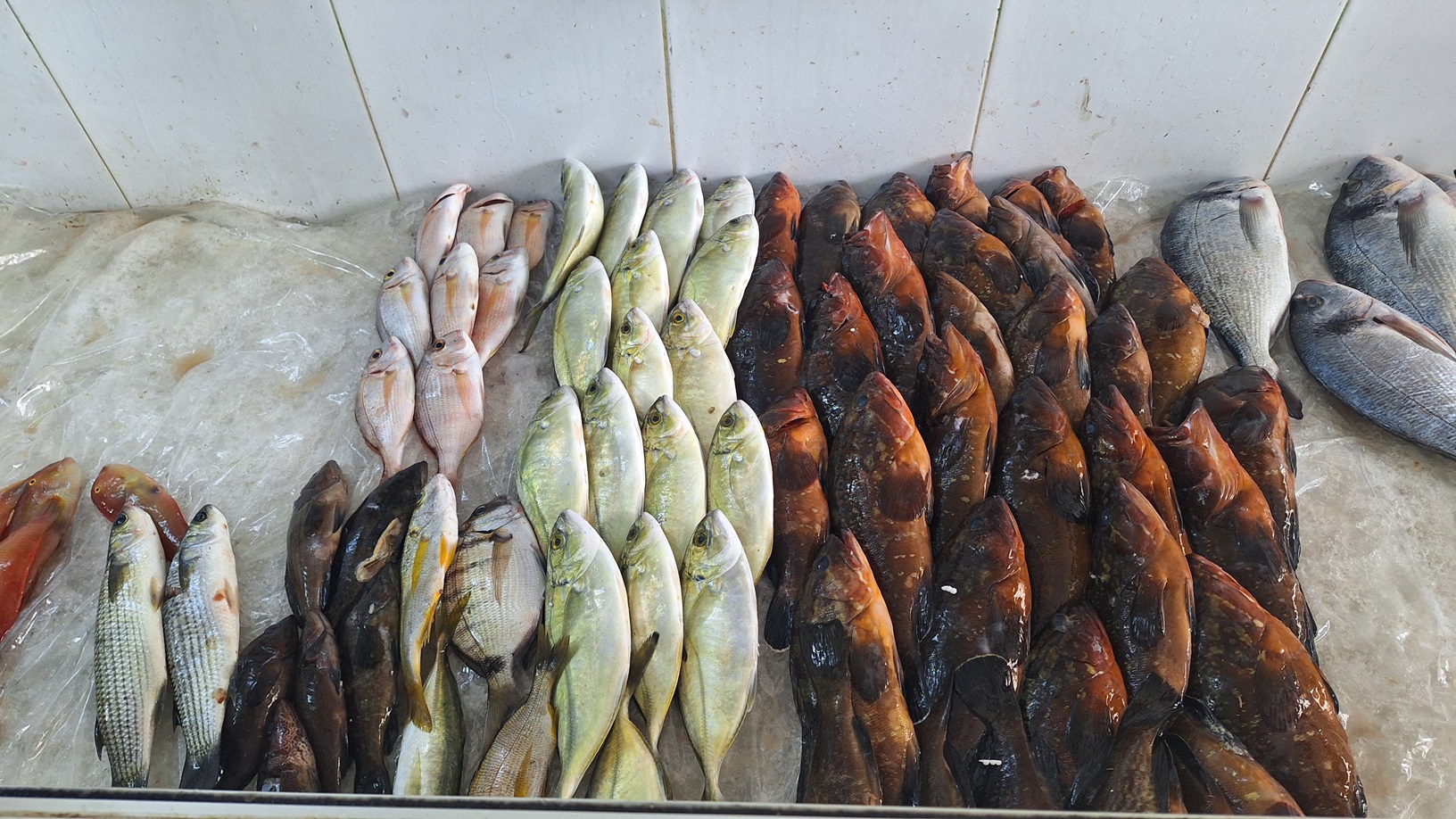 From the fish markets in the city of Tartus | Photo by Zeina Shahla
From the fish markets in the city of Tartus | Photo by Zeina Shahla
From the fish markets in the city of Tartus | Photo by Zeina Shahla
Opportunities and challenges
“The entry of these species into our waters is a great opportunity that we can take advantage of, of course, provided they are scientifically studied and documented reliably,” Adel Tanbouk, the president of the Fishermen's Association in Tartus, tells me as we walk through a fish auction in the city. He introduces me to the species offered for sale every morning and the port where fishermen's boats are lined up and ready to sail and fish. He points out that the city now has over 110 boats with over three hundred fishermen, relying on the sea as their primary source of livelihood. As for the governorate as a whole, it has nearly two hundred fishing boats.
With declining local fish quantities in the Mediterranean attributed to many factors, including destructive fishing practices like the use of dynamite, toxins, electricity, and overfishing during breeding seasons, Tanbouk sees benefits in this opportunity for fishermen throughout the country. Species like the migratory Sultan or Gulf fish are now present in abundance and acceptable sizes. Due to their distinctive taste and rapid reproduction, they have gained high economic value. He notes that he collaborates continuously with fishermen, the Public Authority for Fisheries, and other scientific entities to identify, document, and study exotic species in detail.
Diverse exotic species, whether animals or plants, may have serious adverse effects on biodiversity, ecosystems, fisheries, human health, tourism, and coastal development, and controlling them could be extremely difficult and costly.
However, the fisherman presents a set of challenges that must be addressed. Among them are harmful fish species like the pufferfish, which gnaw and damage fishing tools like nets and hooks. These species can also cause cases of poisoning, sometimes leading to death. One suggested solution is to encourage large-scale fishing of these species with specific rewards to reduce their rapid reproduction. Additionally, raising awareness about the risks of these species in markets and among consumers is crucial. Tanbouk highlights the efforts of the Coastal Region Branch of the Public Authority for Fisheries in educating fishermen on this matter to prevent these fish from reaching markets and ensure consumer safety.
The head of the Fishermen's Association expresses concerns about the competition of new species with local ones for food resources, a matter he personally observes regularly. He states, "While it's true that we benefited from migratory species, there is no longer an abundance of food in the sea. For example, when we talk about the migratory Sultan fish, we must not forget that the local Sultan fish has significantly decreased in numbers. While it was possible to catch one hundred kilograms of it in the past, it is barely found today. The new species seems to have a stronger structure, higher reproductive capabilities, and self-reliance, leading to a multiplied population compared to the local species. The same applies to the Gulf seed fish, traditionally caught in small sizes for over a decade. However, last week, I caught a specimen measuring 15 centimeters, which is considered large. This indicates that these fish are reproducing, growing, and finding the environment conducive to their existence."
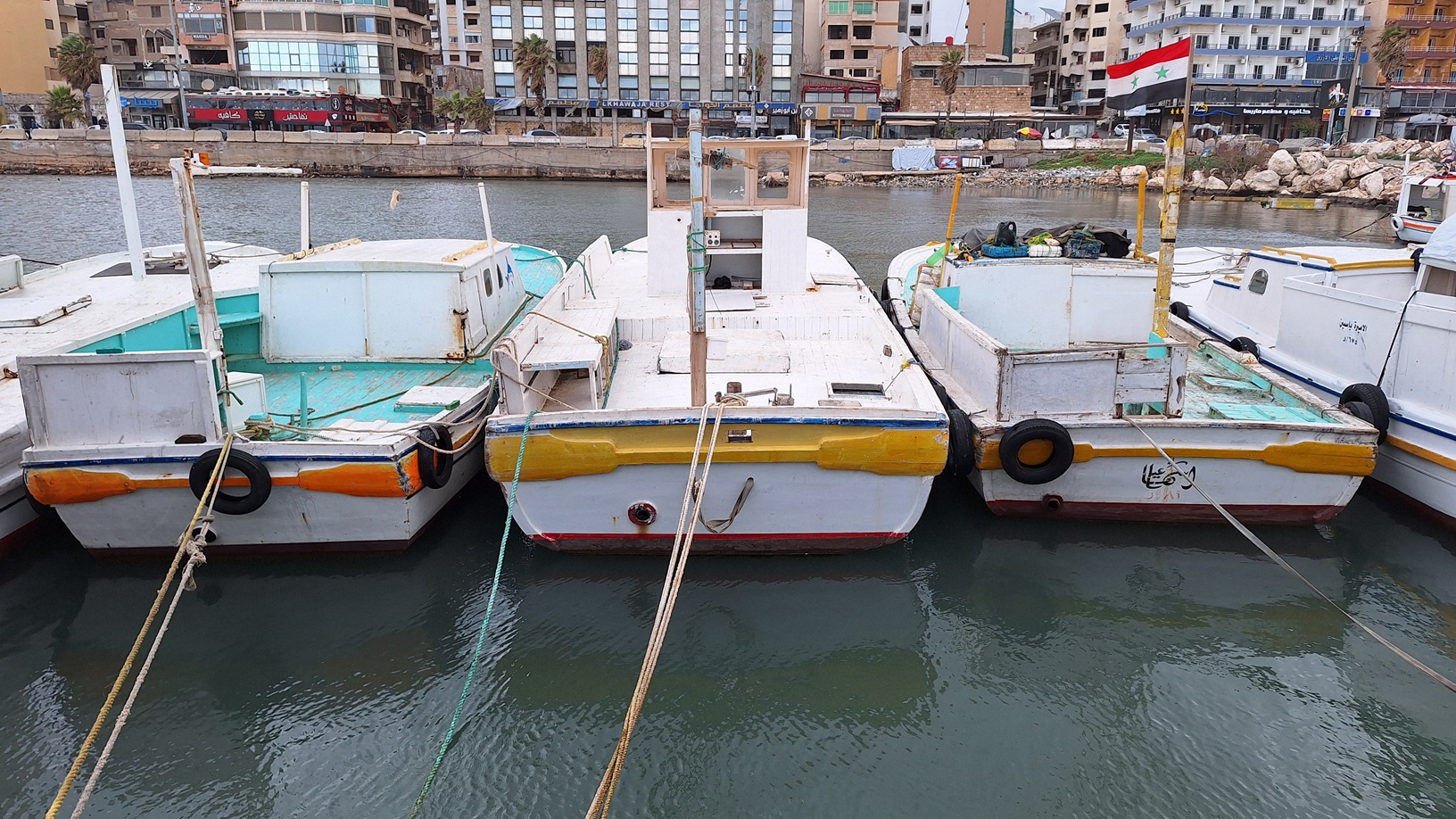 A fishing port in the city of Tartus | Photo by Zeina Shahla
A fishing port in the city of Tartus | Photo by Zeina Shahla
A fishing port in the city of Tartus | Photo by Zeina Shahla
The concerns are affirmed by Dr. Alaa al-Sheikh Ahmad, who points out that when migratory species settle, they undoubtedly compete with local species for food resources, such as crustaceans and algae, reducing the available quantities. Today, these migratory species constitute approximately 15 percent of the total catch volume of Syrian marine fish and 25 percent of the total number of Syrian marine species. According to him, this is a "large number" that requires more in-depth studies, precise scientific monitoring, and continuous observation of migratory species and their habitats. This is necessary to fully understand the impact of these organisms on our local environments. As for economically significant Lessepsian species, he notes that "around 20 documented species have migrated to our marine waters so far. This migration has beneficial aspects, including the introduction of economically valuable species to Syrian marine waters, contributing to the increase in Syrian marine fish production."
Awareness, laws, and protected areas
In addition to the solutions proposed by Adel Tanbouk, Dr. Alaa al-Sheikh Ahmad points out that the Public Authority for Fisheries is implementing large-scale campaigns, holding seminars, and distributing pamphlets to educate fishermen, consumers, and vendors on how to deal with various fish species. This includes discussions on how toxins can be transferred through touch, stings, or consumption of certain species. There is also an emphasis on the necessity of disposing of toxic species, such as the puffer fish, when found in the catch and preventing them from re-entering the water alive, thus permanently restricting their access to fish markets. He discusses satisfactory results from these efforts, with a noticeable decline in cases of infection and poisoning.
"While it's true that we benefited from migratory species, there is no longer an abundance of food in the sea. For example, when we talk about the migratory Sultan fish, we must not forget that the local Sultan fish has significantly decreased in numbers. While it was possible to catch one hundred kilograms of it in the past, it is barely found today. It seems that the new species has a stronger structure.”
He points out that the authority is working on conducting new studies to periodically adjust the decisions regulating fishing to become compatible with the discovered fish species and determine how to organize the dates and methods of catching them, dealing with them, and preserving marine fish stocks and their habitats.
For her part, Dr. Izdihar Ammar emphasizes the importance of implementing control procedures on maritime transport operations and discharging ballast water from ships, which may carry various species into our waters. She also stresses the need to remove invasive species through various fishing techniques while coordinating with fishermen and officials in the marine resources sector to manage and develop these techniques and the necessity to involve all parties, including local authorities, reserve managers, scientists, and non-governmental organizations. She underscores the significant role that marine scientists and environmental researchers can play in raising awareness among the population about the risks facing marine biodiversity. The expert further highlights the unique situation in Syria, which is suffering from war and economic sanctions that exacerbate its crises and limit its capabilities, and that it requires essential support to confront the current and future catastrophic social, economic, and environmental impacts.
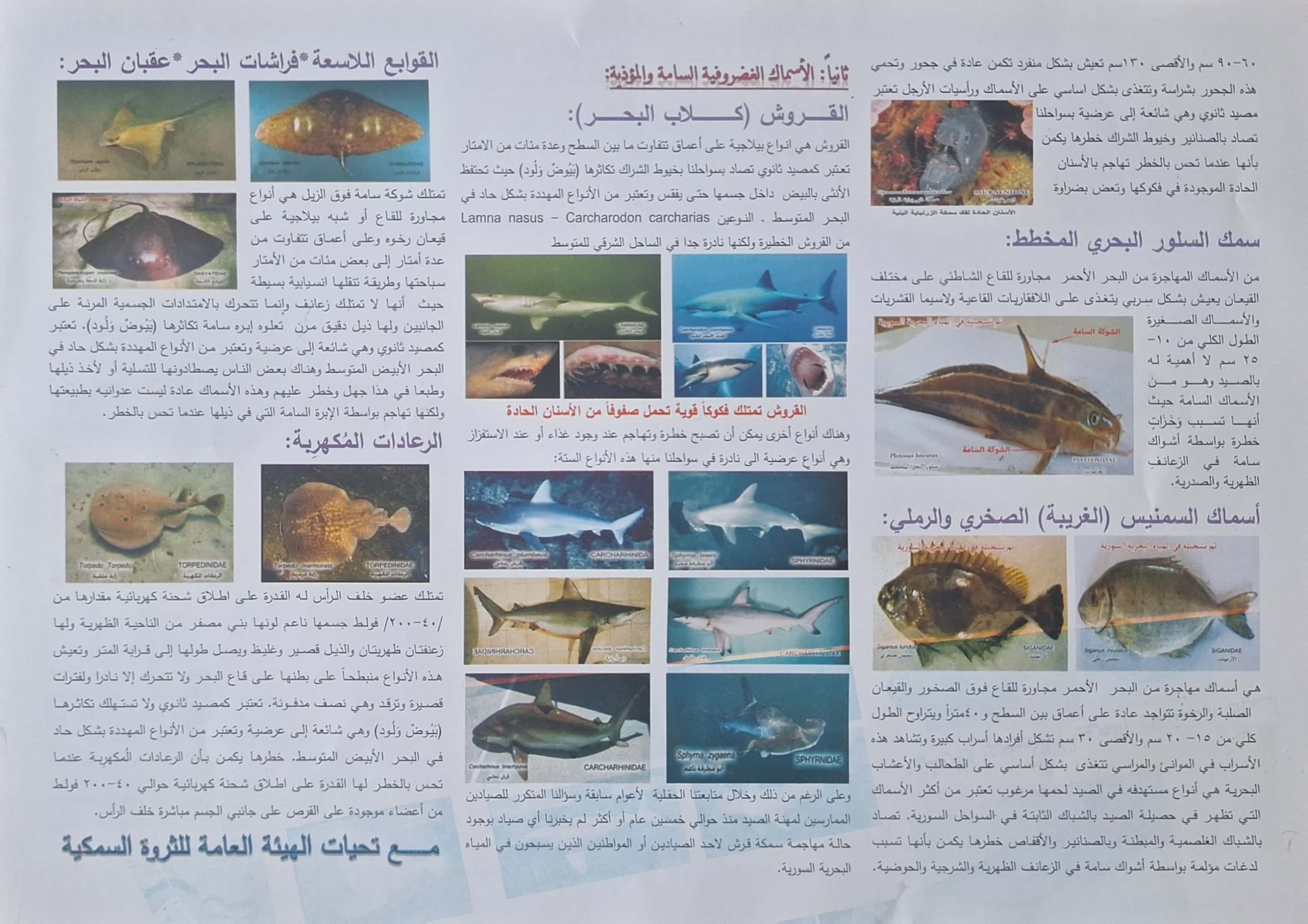 Awareness pamphlets distributed by the Public Authority for Fish Resources in Syria
Awareness pamphlets distributed by the Public Authority for Fish Resources in Syria
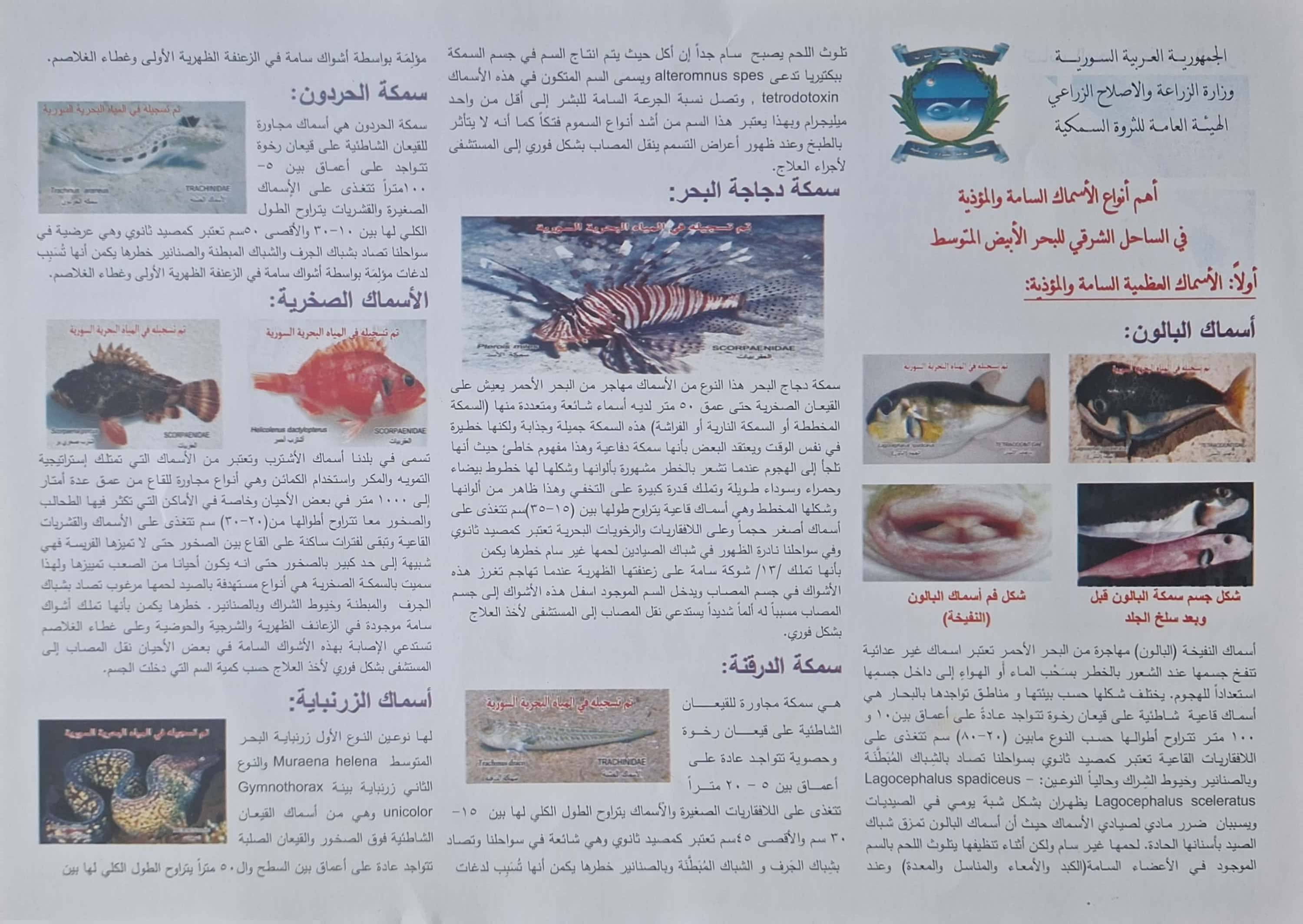 Awareness pamphlets distributed by the Public Authority for Fish Resources in Syria
Awareness pamphlets distributed by the Public Authority for Fish Resources in Syria
Awareness pamphlets distributed by the Public Authority for Fish Resources in Syria
She also emphasizes the importance of research efforts to preserve marine biodiversity and support the marine ecosystem's ability to withstand climate change. This is achieved through activities such as reducing overfishing, maintaining sufficient numbers of species to ensure ecological balance, and creating protected marine areas to provide a safe haven that allows organisms to grow and thus replenish the marine environment's resources.
Indeed, relevant entities in Syria, including the Syrian Society for Aquatic Environment Protection (SSAEP), plan to establish such reserves dedicated to preserving specific local fish species, especially those with low fertility. As for the existing projects in the Mediterranean, they include the Tyre Coast Nature Reserve (TCNR) in Lebanon, where I spoke with its director, Dr. Ali Badreddine, via WhatsApp. He informed me about a unique experience aiming to protect the region's agricultural, marine, and terrestrial resources.
The reserve team promotes the concept of participatory citizen science with the local community, including fishermen and divers. They encourage reporting, documenting, and photographing exotic species in cooperation with researchers in order to take necessary precautions.
The reserve pays special attention to local fish species, as indicated by Badreddine, a researcher in marine science. The focus lies in allowing them to grow to their natural size and reproduce at a natural rate within a comfortable ecological system away from any pressures they may face outside the reserve. Subsequently, fishermen can benefit from this economically and socially. As for invasive species, the reserve encourages their capture if they have economic value or their elimination if they do not.
Here, the reserve team promotes the concept of participatory citizen science with the local community, including fishermen and divers. They encourage reporting, documenting, and photographing exotic species in cooperation with researchers in order to take necessary precautions, either preventing their proliferation or understanding the risks of their capture if they are harmful, such as the toxic puffer fish, or determining the potential economic value of some fish, such as the Dusky Spinefoot.
"Invasive and migratory organisms, such as crustaceans and shellfish, will continue to come to our sea as long as there is heavy ship traffic, rising temperatures, high salinity, and carbon dioxide levels in the waters. We basically regard them as environmental pollution, which negatively affects the marine system, even if they have economic value. However, we seek to deal with them in the best way, as this is nature in the end," he concludes, saying, "The idea of the reserve does not mean that we prohibit invasive species; we protect all species. Still, we encourage local species to grow and regain control of their own habitat and space."
* Research for this article was facilitated and supported through the Candid Media & Science Programme
Photography by Zeina Shahla
Raseef22 is a not for profit entity. Our focus is on quality journalism. Every contribution to the NasRaseef membership goes directly towards journalism production. We stand independent, not accepting corporate sponsorships, sponsored content or political funding.
Support our mission to keep Raseef22 available to all readers by clicking here!
Interested in writing with us? Check our pitch process here!
